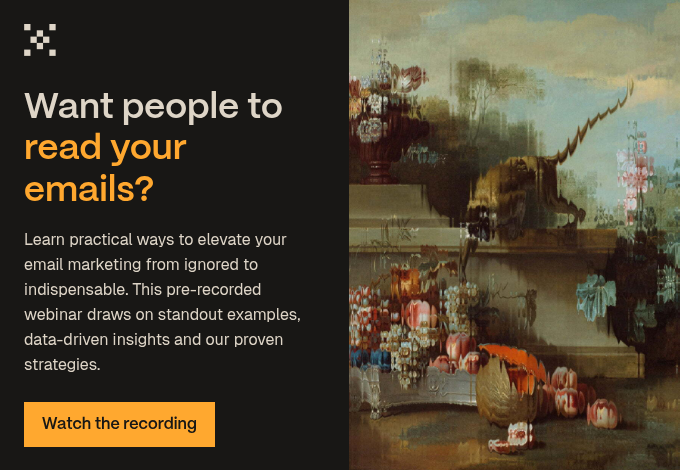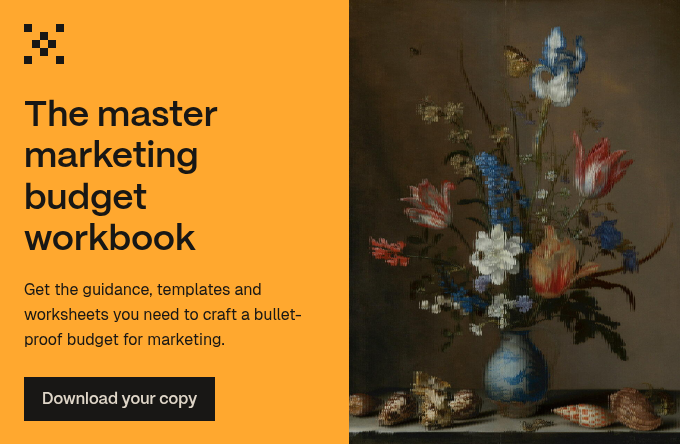It’s no secret that at Articulate, we love inbound marketing. Compared with outbound advertising, inbound lead generation strategies are non-invasive, more targeted and more profitable. Indeed, 91 percent of people think adverts have become increasingly intrusive over the last few years. This is why over 615 million devices worldwide have an ad-blocker.
However, this doesn’t mean you should abandon advertising altogether. You just need to take a different approach.
In this guide to Pay-Per-Click Advertising, we’ll show you what PPC is, why your B2B company should do it and how to run an effective campaign.
Shall we begin?
Table of Contents
Chapter 1: What is PPC and how can it benefit your business?
Chapter 2: Choosing the right PPC campaign platform.
Chapter 3: How to select your target audience for Pay-Per-Click Advertising.
Chapter 4: Secrets of engaging your PPC campaign’s target audience.
Chapter 5: Tracking the right metrics for advertising online.
Chapter 6: The Articulate Marketing Pay-Per-Click Advert Template.
Chapter 1: What is PPC and how can it benefit your business?
Despite its prevalence online, not many people know what PPC is. (Seriously, the amount of times I’ve had to explain myself to people who were told I do ‘PCP’ is ridiculous.)
So, for once and for all, here is your definitive answer to what PPC is and how it can benefit your business.
What is PPC advertising?
Pay-per-click (PPC) advertising is a digital marketing technique where you pay show your advert to potential customers.
Done correctly, it is highly targeted and an effective part of any marketing campaign.
PPC allows you to buy relevant traffic that could convert into leads on your website, rather than earning those contacts organically. You pay every time someone clicks on your advert.
It operates on a bidding system, where you enter the amount you are willing to spend for a potential customer to see your adverts. The amount you will need to spend will vary depending on what other businesses with similar adverts are bidding.
Think of it as an online auction for website traffic and you’ve got the basic idea.
How PPC can benefit your business
Now that you know what PPC entails, here’s why it’s right for your business.
Engaging in any form digital advertising means you’re reaching people where and when you want to. This can be via:
- Search engines (Google, Bing, etc),
- Social media platforms (LinkedIn, Twitter, Instagram), and
- Third-party websites.
When you advertise on a platform that is appropriate to your audience, you are engaging with potential customers on their terms. If you can make your adverts non-intrusive, personalised and valuable to your audience, then your campaign will be a success.
Here are a few other ways that PPC can benefit your business.
1. PPC provides immediate and consistent website traffic
Because you are paying, you should see an increase in traffic to your site almost immediately after launching your campaign. Not only that, but if you set your budgets correctly you can keep a steady stream of paid traffic for the entirety of your campaign.
2. PPC increases brand awareness
With traditional inbound marketing techniques, it takes time to build organic traffic. Until you reach a certain level, there may be very little awareness of your brand. PPC allows you to pay your way to an audience, increasing brand awareness.
3. You can define your target audience
No matter the platform, you can choose a target audience for your PPC campaigns. This allows you to get your adverts in front of your ideal customer. You can even exclude people who don’t fit your customer persona. This targeting can be based on keywords, or it can be based on attributes like:
- Geography (UK, London, Glasgow)
- Sex (Male, Female, Other)
- Age
- Job title
When you advertise, the more you can define your audience the higher chance of success your campaign has. And, you won’t be annoying people who would never become your customer in the first place, which is just a waste of everyone’s time. So, be sure you know who you are marketing to.
4. PPC campaigns are infinitely adaptable
Beyond choosing your target audience, you can tailor your campaign in any way you see fit. You can:
- Set and change budgets. This includes daily budgets as well as the overall campaign budget.
- Update/replace adverts. If your campaign involves multiple adverts you can use insights to find out what your audience responds to. You can then update or replace any adverts that are not performing as well as they should.
- Extend your campaign. You can start, stop or even extend your campaign at any time.
Chapter 2: Choosing the right PPC campaign platform
For B2B businesses, there are a few platforms available to host your PPC campaigns. They include:
- Google AdWords
- LinkedI
Each platform has different strengths. You need to know what one is the most appropriate for your campaign. We’ve tried them all, so here’s our advice to help you decide:
Google AdWords
When it comes to running your PPC campaign on a search engine, there is no finer service than Google AdWords.
After all, Google owns just under three-quarters of the online search market, so your adverts are more likely to be seen by lots of people.
What’s more, it provides success to advertisers that use it. In fact, businesses make an average of $2 for every $1 spent on Google AdWords.
AdWords also has detailed analytics and charts built into its software. This can help you decide how best to spend your money to run the most effective campaign possible.
The one area where AdWords fails against other platforms is in targeting. As it runs exclusively on keywords and search terms like ‘PPC advertising’ or ‘digital advertising’. You can’t really dig in to find your ideal audience. As a result, you can get ‘noise in the numbers’, and find yourself spending money on clicks that won’t go anywhere.
Advantages:
- Large audience
- Multiple Ad Options (Video, Image, Text etc)
- Easy to use
- Good ROI
Disadvantages:
- Less targeted
- Noise in the numbers
When you should use it:
You may convert people into customers using AdWords, but you should be prepared to pay a lot for the privilege. A little does not go a long way. We would recommend AdWords if you want to put your business front-and-centre by boosting website traffic and brand awareness.
At Articulate Marketing, we often recommend LinkedIn advertising for our clients, who tend to be IT providers or MSPs with a small to medium business model. LinkedIn sponsored content is a very effective advertising platform for B2B businesses like these. This is because LinkedIn is a professional networking app. It’s not just for socialising.
This means users are in a working mindset. Their mind is on their business, not what their ex-partner is up to. This is most likely why 79 percent of B2B marketers find LinkedIn to be effective at generating leads.
Compared to the likes of AdWords, LinkedIn gives you full control over both budget and targeting.
- Budget. Daily and Total Budgets, as well as Maximum Bid Amount means you have complete control over how much you are spending.
- Targeting. LinkedIn has very detailed targeting based on personal attributes, which helps you build your ideal customer. These attributes include (but aren’t limited to) location, job title, seniority, industry and company size.
What’s more, according to our partner HubSpot, when it comes to conversion rates and cost per contact LinkedIn outperforms AdWords.

LinkedIn shows you insights that let you drill down into each advert within your campaign. This allows you to experiment, alter and update any part of the campaign to optimise its performance. Do more of whatever works. Remove what doesn’t work.
Advantages:
- Engaged Audience
- Multiple Ad Options (Video, Image, Text etc)
- Easy to use
- Excellent ROI
- Excellent targeting capability
- B2B specific targeting capability
- Higher conversion rates
- Lower cost per contact
Disadvantages:
- Higher cost per click
When you should use it:
LinkedIn is the ultimate B2B marketing ‘all-rounder’. So, we recommend it if you want you raise your brand awareness, audience engagement, traffic and leads – without blowing the budget.
Many businesses, use Twitter Adverts to try and attract some of the platform’s 326 million monthly users.
If you were to research Twitter’s PPC capability (beyond this article) you might be confused. The internet can’t quite decide whether it’s an ideal platform for B2B advertising or not. Well, we’re here to put this argument to rest.
The simple fact is, although Twitter is also a personal platform, it has a large business presence. So, you can advertise to many potential customers. Not only that, they are an engaged audience. In fact, Twitter posted a 50 percent increase in ad engagements between October 2017 and 2018.
The targeting capabilities on Twitter are fantastic. There are a few options to choose from:
- Follower-based targeting. You can target based on who people follow. This could be an account that interests your audience, or even a competitor.
- Keyword targeting. Like Google AdWords, you can target hashtags and keywords. So, an MSP could target #cybersecurity or ‘cloud storage’. You can do this based on users’ timelines and their Twitter search history.
- Interest targeting. You can target users based on their interests. This can be very detailed targeting with 25 interest categories that expand into 350 sub-topics. For example, you can target ‘Technology’ under the ‘Business’ category.
Twitter Analytics Audience Insights gives you valuable information about your followers and those who engage with your adverts. This includes demographics, lifestyles and consumer behaviours.
Advantages:
- Large, engaged audience
- Multiple Ad options (Video, Image, Text etc)
- Excellent targeting capabilities
Disadvantages:
- Noise in the numbers. There are a lot of ‘personal’ users.
- Twitter has a bot problem (that it’s trying to fix). It could mean wasting money on fake accounts.
When you should use it:
Twitter is a powerful platform when it comes to PPC. Although traditionally a B2C platform, we think it’s worth experimenting with as a B2B business. We would recommend using Twitter for brand awareness and customer conversion campaigns.
Our final platform is the big one. The grand-daddy of social media: Facebook.
Like Twitter, historically, it has been a ‘personal’ platform mainly used for B2C advertising. However, this is no longer the case: B2B advertising is on the rise.
The joy, and curse, of Facebook is that it’s where the people are. Indeed, they have over 2.23 billion monthly users. To put that in to perspective, the population of the Earth is approximately 7.7 billion people.
That means about 29 percent of all humans use Facebook. If you can’t find your audience there, where can you?
Facebook advertising allows you to dive deep into your audience. This includes personal statistics such as location, relationship status and education level. But, more importantly, it has insights that are especially useful for B2B marketers, like job title and company name. You can also find out the percentage of your audience working in each industry.
You can use this information to find out what kinds of person engages with you. This allows you to better target your campaign to those industries/job titles that will bring the best results. This gives it an edge over Twitter as you can target professionals, like with LinkedIn Ads.
Advantages:
- Massive Audience
- Multiple Ad options (Video, Image, Text etc)
- Excellent targeting capabilities
- B2B specific targeting capabilities
Disadvantages:
- Noise in the numbers. There are a lot of ‘personal’ users.
When you should use it:
Facebook has proven itself in the realm of B2B marketing with its ability to target ‘professional attributes’ like job title and industry. This makes it ideal for both brand awareness and customer conversion campaigns.
Your B2B Pay-Per-Click stage is set
We hope our analysis is helpful in choosing the ideal platform for your B2B advertising campaigns. However, this is only the first step in running the perfect PPC campaign. Next, you need to know how to define your audience.
Chapter 3: How to select your target audience for Pay-Per-Click Advertising
Defining your target audience is vital to the success of any PPC campaign. When you get it right, you can deliver marketing messages that resonate with people. If you don’t know your audience, you could be barking up the wrong tree entirely.
Audience definition is so vital, that it may soon overtake keywords as the primary focus for search networks. So, even when using AdWords, you will need to know your audience.
This improved audience definition has become increasingly important. And, the trend will only continue as we move forward.
Know your personas
No matter what platform you are advertising on, you need to know your marketing personas.
However, you don’t prepare personas purely for your PPC campaign.
If you are serious about your business marketing in general, you will already know who your ideal customers are because you have stated clearly defined personas.
All marketing activity is modelled around your chosen marketing persona(s). This is true whether you are blogging, email marketing or running a PPC campaign. Before you do anything, you need to know who you’re talking to.
Here are some of the main benefits to having a well-defined marketing persona:
- You understand your customers’ needs/interests. When you know your customers, you know what drives them. As a result, you can create tailored content, providing them with valuable information that makes them want to engage with your business.
- You know where they spend their time. For example, you will know what platform your ideal customer is likely to be on, so you can launch a PPC campaign there.
- Better quality leads. In all aspects of marketing, if you have a persona in mind, you’ll attract the right people with your messages. This means better quality leads who are more willing and likely to become loyal customers.
Now that you know why defining your marketing persona is useful in a broader sense, here’s how to apply these lessons to your PPC target audience.
- Further reading: How to write a buyer persona
3 simple steps to defining a target audience for your PPC campaign
Whether you have a marketing persona or not, you can define your target audience for a PPC campaign by asking three simple questions - who are they, where are they and what do they do?
Question 1: Who are they?
When defining your target market for any PPC, the first questions you must ask is ‘who are they?’. Within your answer, you should include the following:
- Gender
- Age
- Education
Question 2: Where are they?
Once you know who your target customer is, you need to know where they are. This is as simple as knowing where they would live.
For example, if you are a local business, they would live nearby. If you are part of a multi-national company your target market may include whole countries or even continents.
To ensure you target the right people with your adverts, include and exclude locations, which you can do on most platforms. So, you can say that your target market lives in London, but not Slough. This capability can make your geographical targeting incredibly accurate.
Remember that your location choice may have an impact on what language you need use when advertising. Although you may reach a few people who speak the language, you are restricting your audience.
This doesn’t mean you should never advertise in a non-native language. But, before you do, be sure it will give you the return you want.
Question 3: What do they do?
It is said, to know someone, look to their actions. Even in the realm of PPC advertising, this is an accurate measurement of a person.
Depending on what platform you are working on, you can target professional and personal behaviours. Some, like Facebook, allow you to target both at the same time.
For example, a lawyer’s search history on LinkedIn will focus on their professional interests. Whereas, on Facebook, if you so choose, you can find a high-functioning legal mind who also likes the page ‘Pretty Boys in Beige’. I’m not sure why you would want to target that person, I’m just saying it’s possible.
So, whether it’s professional or personal behaviours you’re looking for, be sure to include:
- Interests. Whether it’s tennis or finance, defining your audiences’ interests helps you pinpoint the kind of person you want to target.
- Job Experience. This can include job functions (e.g. accountancy), seniorities, titles, skills and years of experience. This is particularly useful if you need to target decision-makers within an organisation.
- Company Information. This can include company industry, name, size, connections or even who a company follows on LinkedIn. This is useful if you only target a certain type of business (e.g. legal consultancy firms with less than 250 employees).
Knowing is half the battle
We hope that this guide to PPC campaign audience targeting has been useful. Knowing who it is you are marketing to helps you create the best possible adverts. However, once the campaign is live, your main challenge becomes how to engage your audience.
Chapter 4: Secrets of engaging your PPC campaign’s target audience
You’ve got a well-defined audience and you’ve launched your campaign. Now, you need to engage with those contacts. It’s not enough to advertise without any follow-up. After all, you are looking to turn clicks into customers.
The secrets of engaging with your audience are not exclusive to PPC. They are best practices for turning leads into paying customers across your marketing. If you’d like to find out how your business can improve your lead nurturing process and overall marketing, why not book a meeting with our CEO Matthew Stibbe.
Engaging with your audience on Social Media
Eighty-eight percent of social marketers say that it’s important for their brands to provide customer service through social media.
Indeed, 21 percent of consumers say they’d rather message a business on social media instead of calling up customer service, and that number is growing.
When you run a PPC campaign on social media, don’t be surprised if you get messages and comments on your advert. These should be treated as any other social media engagement. You should respond as you usually would do.
Here are the two main things you need to remember when you respond to comments and messages on social media as a business:
1. Know when to ask and when to act
When you receive any communication on social media, be sure to respond by prompting action. This allows you to answer any question or comment while moving the commenter towards becoming a customer, no matter where they are in the sales funnel.
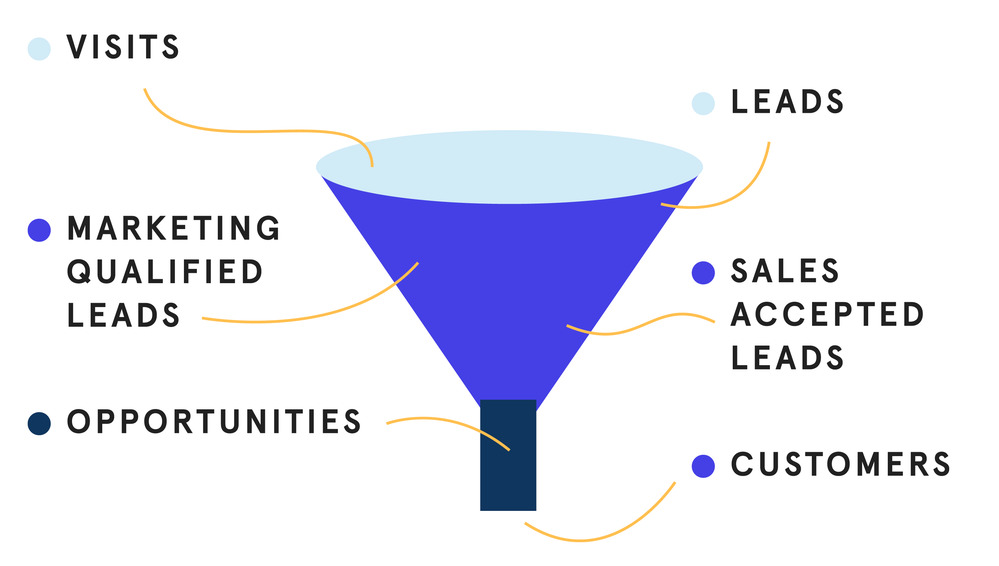
So, ask them a follow up question or prompt them to sign up for a meeting or an offer.
For example, if a commenter has a question about how your product or service works, provide an answer, but also ask something like ‘What do you use at the moment?’. A question like that can lead people ever closer to a sale.
Maybe your commenter is asking more leading questions, like ‘How much would this cost a company with 30 users?’ or maybe they’re asking for a quote. This is when you should prompt them to act by suggesting they book a meeting.
2. Be Human
Despite the rise in artificial intelligence over the past few years, when it comes to social media, people want the real thing. So, when you engage with people online, be sure to show your personality. Indeed, an average of 85 percent of people across three generations (Millennials, Gen X and Baby Boomers) feel authenticity matters when deciding what brands they like and support.
What’s more, you can’t fake authenticity. Seventy percent of the time, consumers are able to distinguish between consumer-created content and brand-created content. So, when you are communicating with your audience, be sure to let ‘you’ shine through (hello!).
So, that’s how to communicate on social media. But, what about after visitors become leads? How do you convert them into customers?
How to turn PPC leads into customers
Once your audience has clicked on your advert and provided their details via your website form, a new dance begins. You are still trying to attract these leads to become customers but now you have more information to work with.
Here are some top tips for engaging with leads you’ve earned through your PPC campaign.
1. Monitor website behaviour
If your website is up to scratch, it should be optimised to move visitors through the sales funnel and turn them into customers. Once a person has clicked your advert and filled in a corresponding form, you should be able to monitor their behaviour on your website.
You can learn a lot more about their intentions, needs and desires based on their activity. This can range from reading blogs and visiting product pages to filling in other forms on your site.
Then, use this information to send them ultra-targeted marketing messages to help them on their journey to becoming a customer.
2. Communicate via workflows and email marketing
Leads that have come through PPC advertising may need a bit more nurturing than those who find your business organically.
You can automate your communications in a way that provides personalised marketing messages for leads based on how they came to your site. How leads engage with these automated communications will help you identify the people who are most likely to become customers.
One of the main ways to talk to your customers is via email marketing. This can include active workflows and/or newsletter blasts to subscribers.
3. Email Marketing - Workflows
If you use customer relationship management (CRM) software, you should be able to schedule an automated workflow to send marketing messages to leads. The average workflow should consist of three to five sequential emails that are relevant to your lead’s interests. They should also be action-oriented.
So, let’s say your PPC campaign focuses around a whitepaper that shows small businesses how they can grow their business with the right technology. Your ideal workflow might look like this:
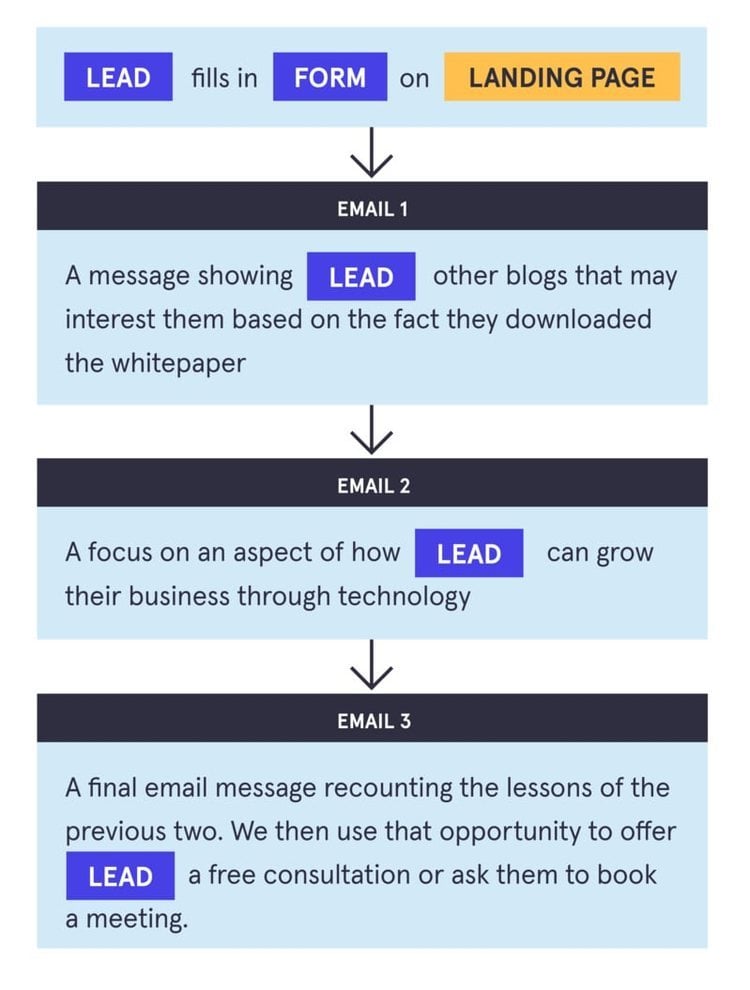
4. Email Marketing – Newsletters and Email Blasts
Newsletters and email blasts are like a workflow, except there is no automation involved and it is a single event. You can use these to let potential leads know about new offers, new blogs or even a marketing event you are running. This gives you another chance to engage with them and hopefully warm up some sales leads that have gone cold.
You don’t ask, you don’t get
As you’ve read so far, advertising is only the start of the PPC process. It can bring you potential customers, but you need to warm them up to seal the deal. But, what does success look like for your business? Do you know what metrics to track?
Chapter 5: Tracking the right metrics for advertising online
Success means different things to different people. Some value work, some value family, some value being able to stick their tongue up their nostril. The point is, in life or in PPC advertising, you need to know what matters to you.
You should decide what kind of campaign you are running. Do you want to increase awareness or conversions?
Awareness campaign
This is when the purpose of advertising is purely to get the most visitors to your site. This really works for promotional videos or thought-leadership blogs.
Despite an awareness focus, you should still have some conversion opportunities available on your page. After all, you never know when someone might want to become a customer.
Conversion campaign
The main purpose of a conversion campaign is to get tangible leads via form submissions. As a result, this kind of campaign works best with whitepapers, case studies and other offers that require a visitor to give their details.
Just because you want to convert people into leads doesn’t mean you can slack off when it comes to traffic. It’s just that your target audience will be a much smaller pool, so they are more likely to fill in your form.
For each of these options, different things matter. So, here are some indicators for success for each campaign type.
PPC metrics to track when building awareness
When all you want is eyes on your business and on your content, there are some very specific metrics you need to track.
- How many people saw your advert on your chosen platform?
- How many of those people clicked on your content to visit your site?
- Cost per click. How much did each click cost you?
Of these three metrics, the most important is ‘cost per click’. After all, you need to know how much money you spent to improve the awareness of your product or service. To measure the success of your campaign, make sure you know what you are realistically willing to spend per click in advance of a campaign.
For example, a successful campaign would be one with a cost-per-click budget of £4 that only ended up costing £3.57 per click.
There is no right or wrong answer to how much your cost-per-click budget should be. It’s a subjective benchmark based on how much your business is willing to spend. If you’re happy with how much you’ve spent, then your campaign has been a success. If not, then you need to refactor your adverts to get a better price.
PPC metrics to track for customer conversion
If your business has enough reach and all you want is more leads you can turn into paying customers, here are the metrics to track.
- Click through rate. Of the people who have seen your advert (impressions), what percentage of them clicked?
- Form submissions. How many people who clicked your advert filled in the form on your landing page?
- Cost per contact. How much did it cost to get each form submission?
In contrast to the awareness campaign, the key metric here is not about clicks – it’s about contacts. It’s about how many marketing qualified leads you received from your activity and how much they cost. So, here is our formula for calculating cost per contact:
Budget spent / Number of form submissions = Cost per contact
A good range for cost per contact is between £20-50. The lower you are in that range, the better your adverts are performing. If you go above £50, you need to refactor your advertising strategy because something is wrong.
Turn knowledge into PPC power
Over the past five chapters, you’ve learned all the basics about PPC. Well, all but one thing – the most important aspect of PPC is that it’s a practical science.
You can have all the knowledge of platforms, metrics and audience targeting but until you create an advert, it’s all purely theoretical.
The best thing you can do, now, is create your first campaign. Take the lessons you’ve learned and apply them. At first, you may not get the results you want, but if you persevere, you can adapt your PPC strategy to boost both brand awareness and overall revenue.
So, you need to know how to create an advert. Unfortunately, this is easier said than done. Not only does each platform have different advert requirements, but they all have various unique advert types and things change all the time.
Have no fear though, at Articulate Marketing, we are here to help. If you need to create the perfect advert, why not use our templates below? They will show you how to create any style of advert on LinkedIn, Twitter, Facebook and AdWords, down to the character limits and recommended image sizes (though please bear with us if things change! We aim to incorporate updates as soon as possible).
Sound useful? Then use our tool below. And if you’d like a downloadable copy, why not fill in the form?
Chapter 6: The Articulate Marketing Pay-Per-Click Advert Templates
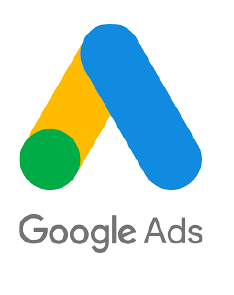

Image sizes
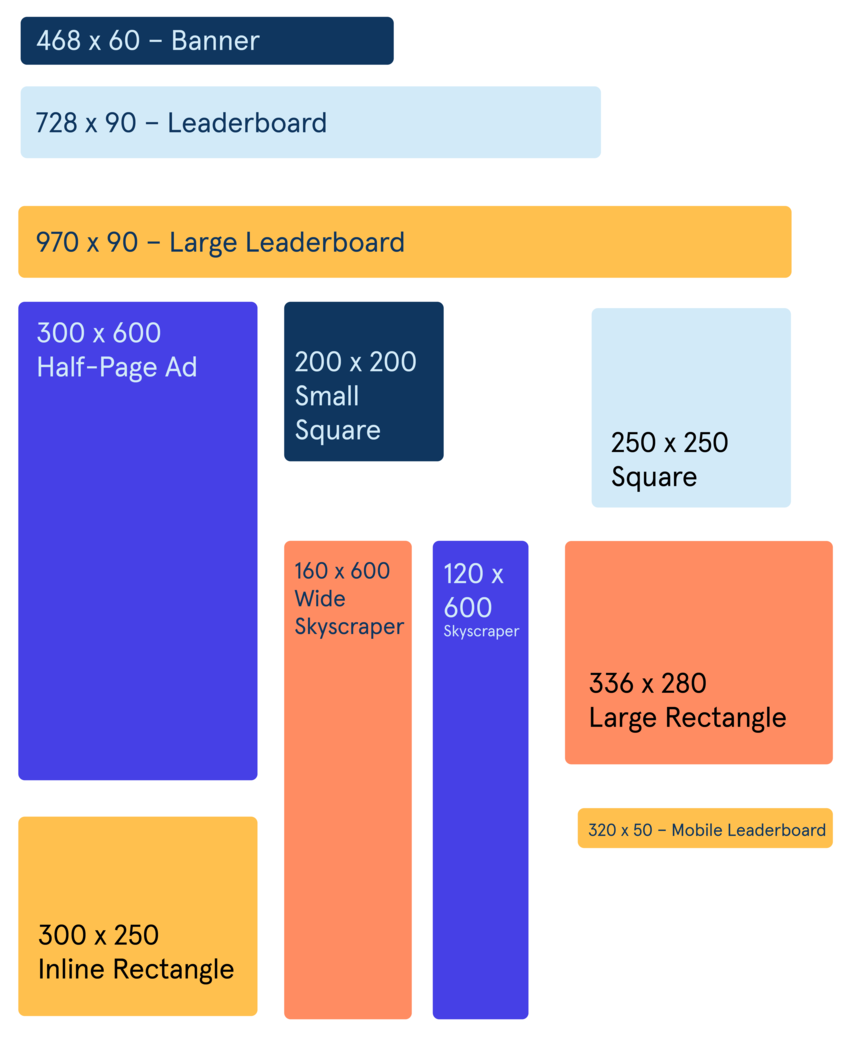
Maximum size allowed is 150kb or less.
Accepted formats are: JPEG, SWF, PNG or GIF
Character Limits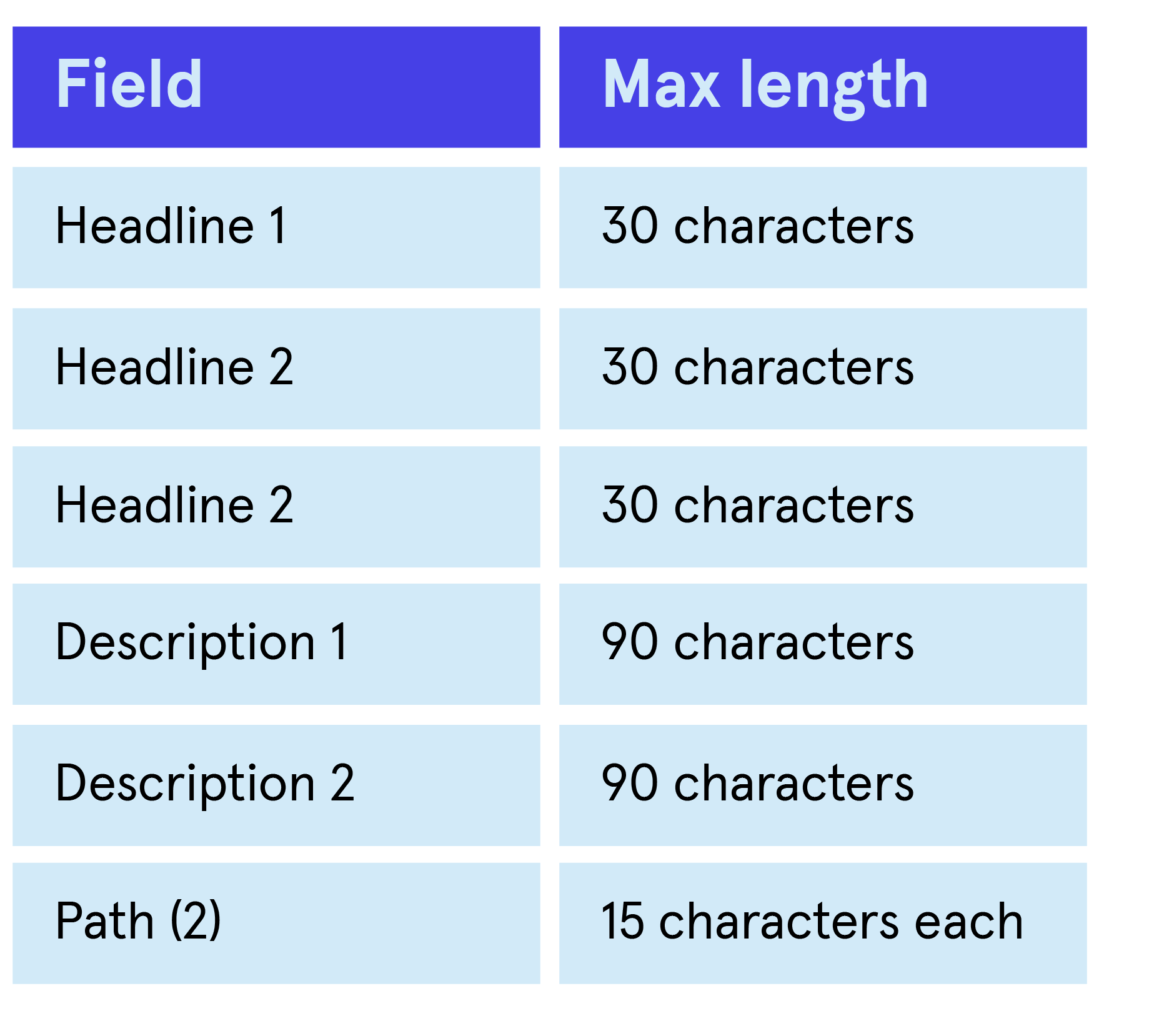
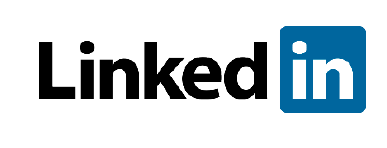
Image Sizes
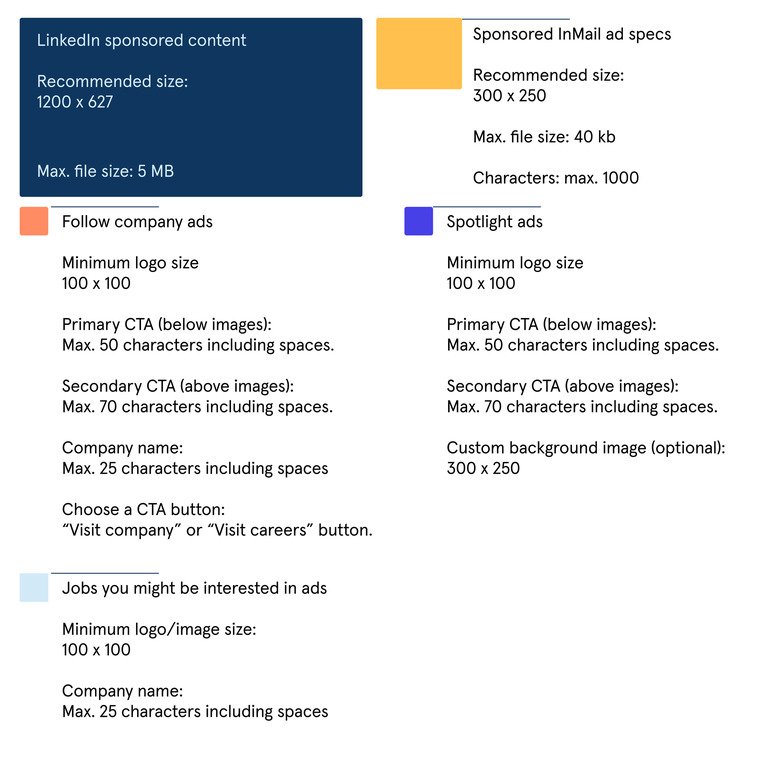
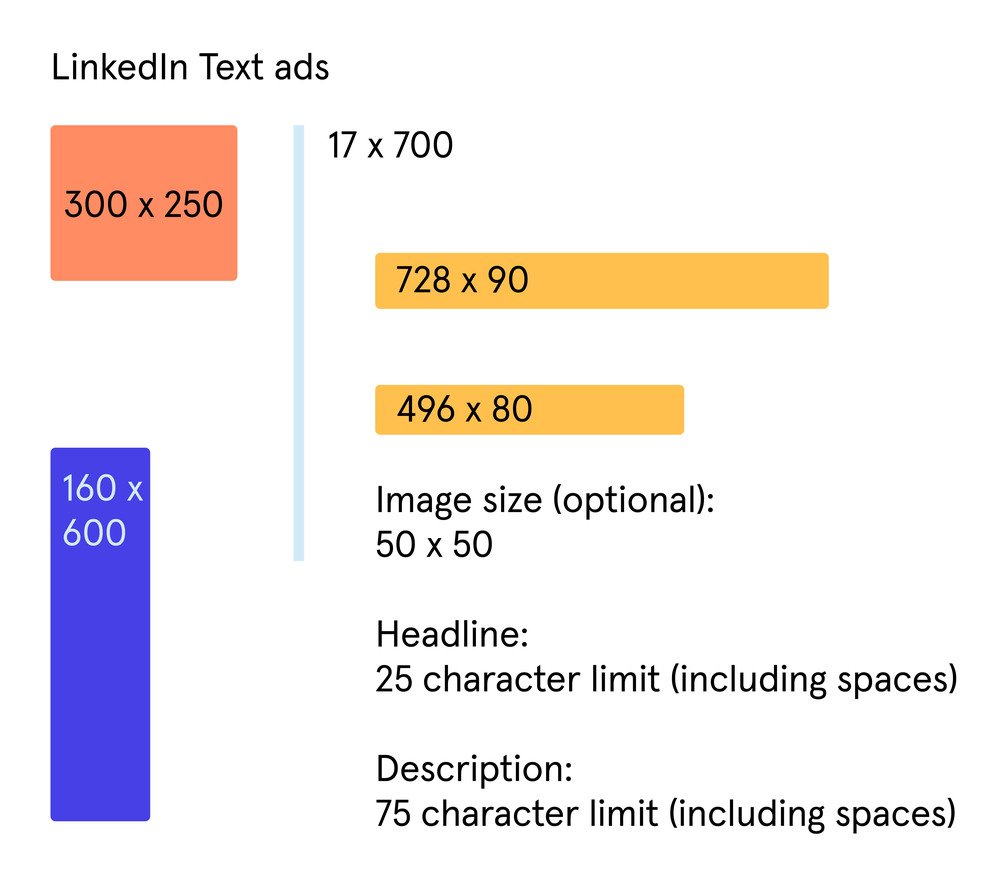
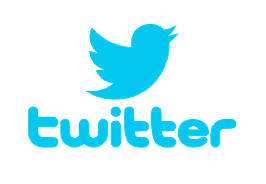
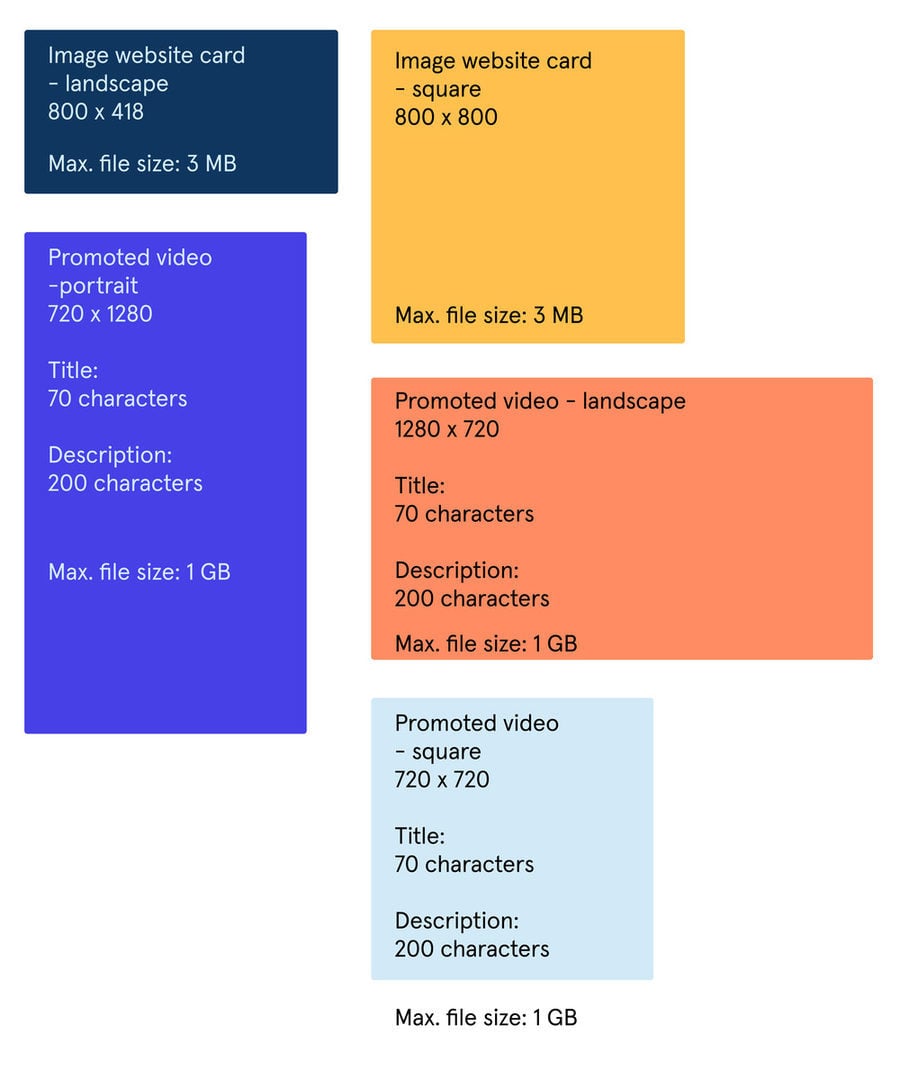
 Facebook
Facebook
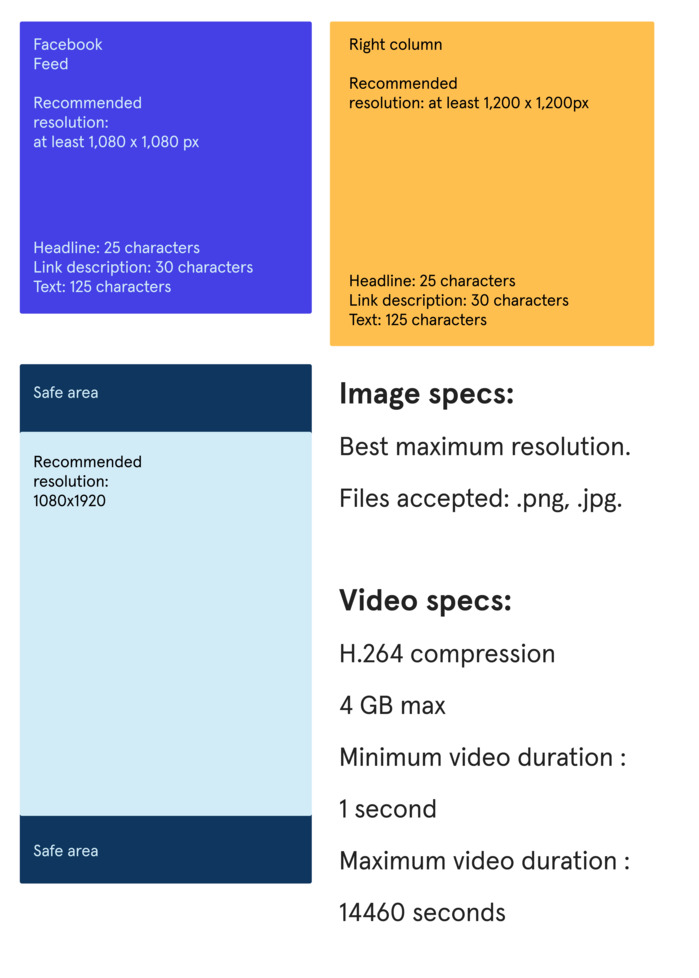
This article was original written in 2019 and has since been updated in 2023.

 Posted by
Paul Morton
Posted by
Paul Morton

